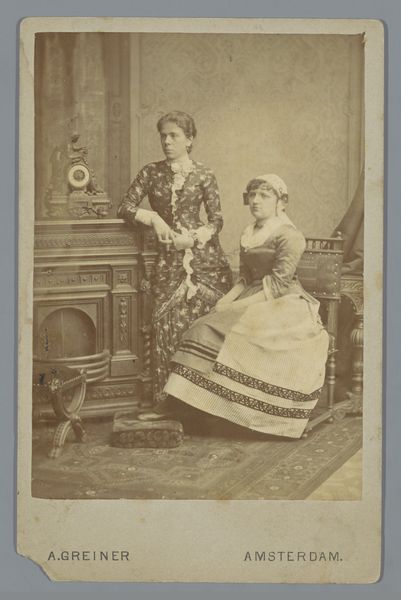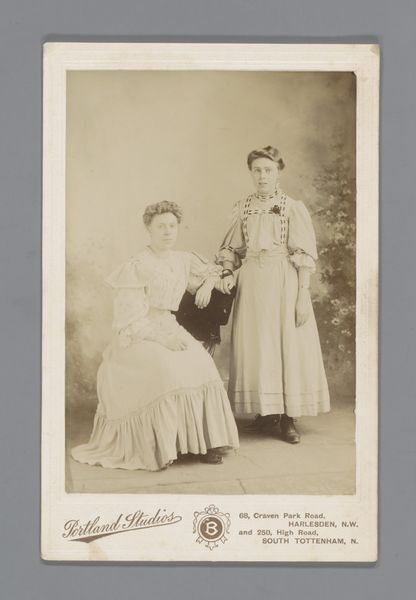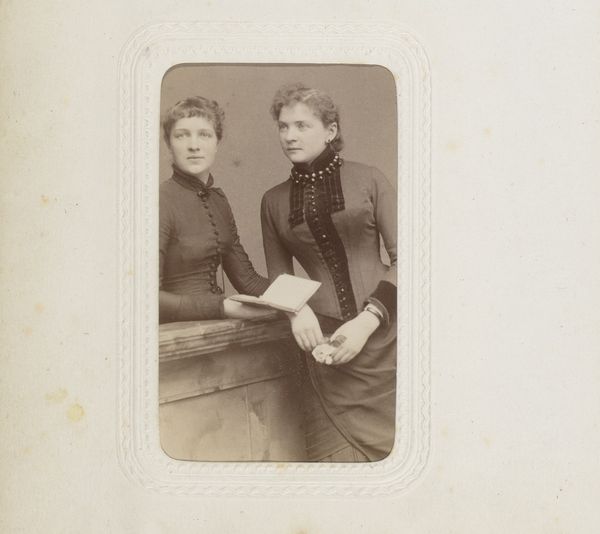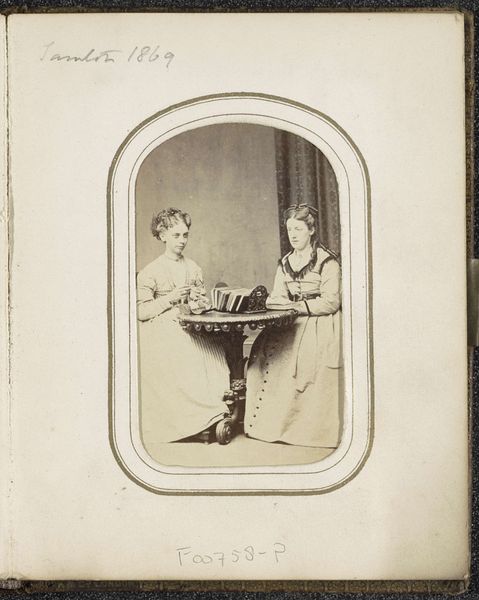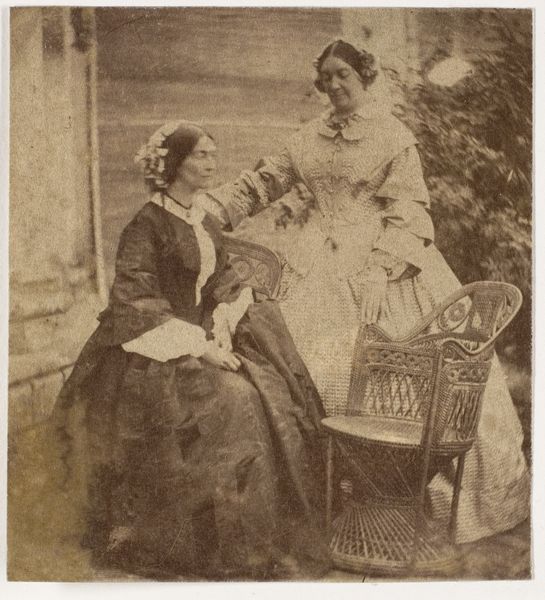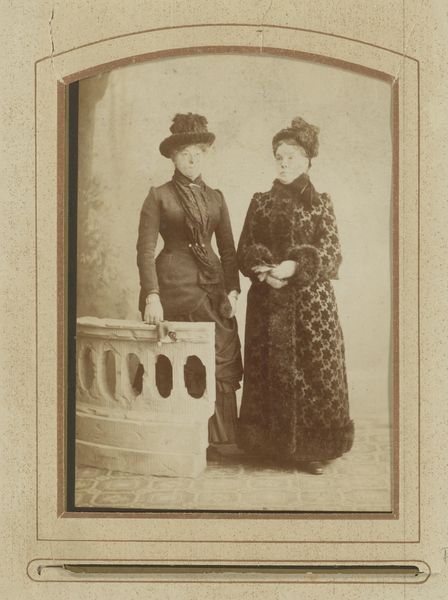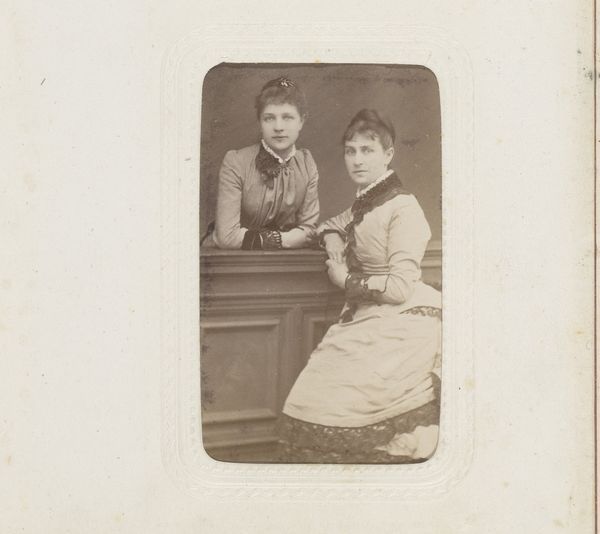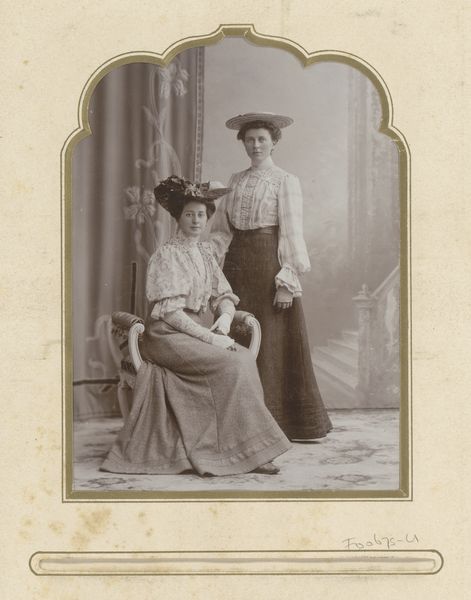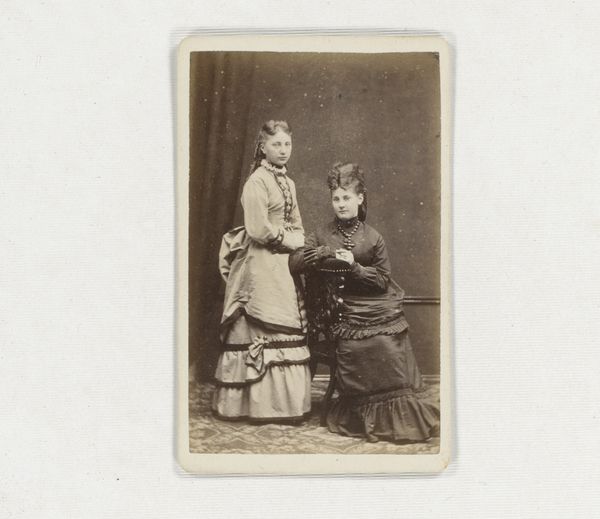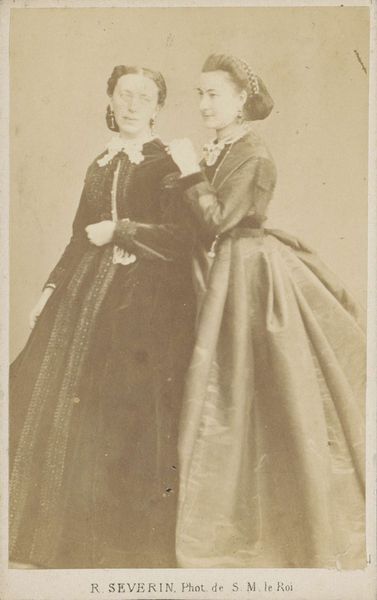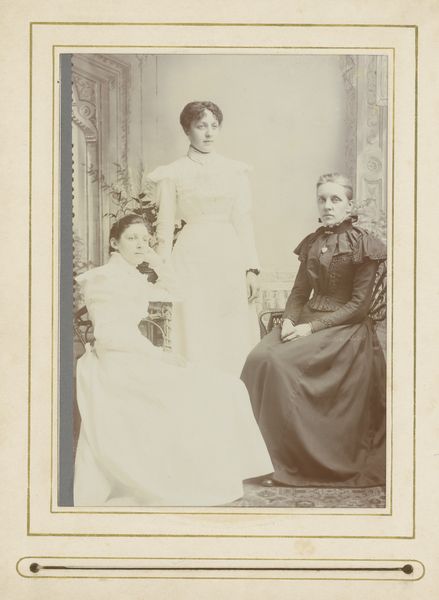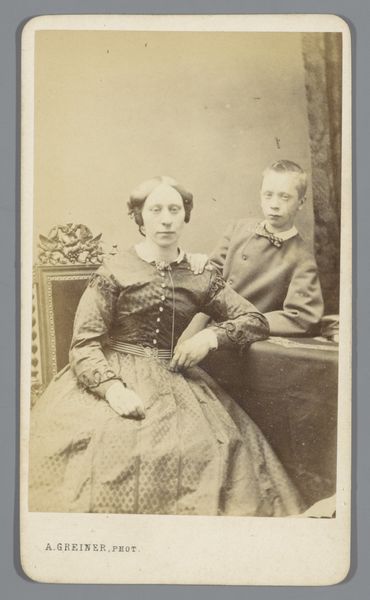![[The Artist's Wife and Daughter] by Louis-Désiré Blanquart-Évrard](/_next/image?url=https%3A%2F%2Fd2w8kbdekdi1gv.cloudfront.net%2FeyJidWNrZXQiOiAiYXJ0ZXJhLWltYWdlcy1idWNrZXQiLCAia2V5IjogImFydHdvcmtzL2Y3NzM1MGQ5LWQ1NzMtNDkxNi04ODM1LTkyZmRhMTM1OTg3NC9mNzczNTBkOS1kNTczLTQ5MTYtODgzNS05MmZkYTEzNTk4NzRfZnVsbC5qcGciLCAiZWRpdHMiOiB7InJlc2l6ZSI6IHsid2lkdGgiOiAxOTIwLCAiaGVpZ2h0IjogMTkyMCwgImZpdCI6ICJpbnNpZGUifX19&w=3840&q=75)
[The Artist's Wife and Daughter] 1846 - 1849
0:00
0:00
photography
#
portrait
#
photography
#
19th century
#
genre-painting
Dimensions: Image: 7 15/16 × 6 7/16 in. (20.1 × 16.3 cm)
Copyright: Public Domain
Editor: Here we have Louis-Désiré Blanquart-Évrard's photograph, *The Artist's Wife and Daughter*, created sometime between 1846 and 1849. The composition, with these two figures positioned quite close together, feels very intimate and domestic, despite the sepia tones lending a sense of historical distance. From a Formalist viewpoint, how might you unpack the significance of the visual elements? Curator: Consider first the arrangement: the figures' placement against a backdrop of a painting and carefully chosen furniture is paramount. Observe how the lines and patterns in the dresses – the stripe and the check – interact with the geometric forms of the set pieces, constructing a balanced yet intricate visual field. Editor: The patterns do create an interesting dynamic. Does the photograph's textural depth speak to a broader artistic discourse or historical context? Curator: Texture and light articulate depth and mood; the photographic medium itself allows for an exploration of surface detail unseen in prior portraiture. Note the subtle tonal variations that create highlights on fabric, the soft gradients on the women’s faces, which offer cues as to emotion or intent, rendered by the then still innovative photographic techniques. These elements reveal that photography seeks an indexical representation that other genres like portraiture did not quite grasp. Editor: It's amazing how much detail it captures. I'm thinking now about how such attention to texture relates to art movements during this era. Curator: Indeed! The relationship of early photographic practices with realism and naturalism, where materiality and structure serve as conveyors of meaning is an aspect we can further develop. The image as an index: the referent for Blanquart-Évrard is those human bodies and their surrounding context. Editor: So, concentrating on the photo's structure and surface helps us appreciate its significance as an image. I definitely have a richer grasp of how photography emerged from the aesthetics of earlier visual regimes now! Curator: Exactly! And viewing its unique formal properties—tone, composition, light—yields critical insight into Blanquart-Évrard's achievement and photographic arts potential at the time.
Comments
No comments
Be the first to comment and join the conversation on the ultimate creative platform.
